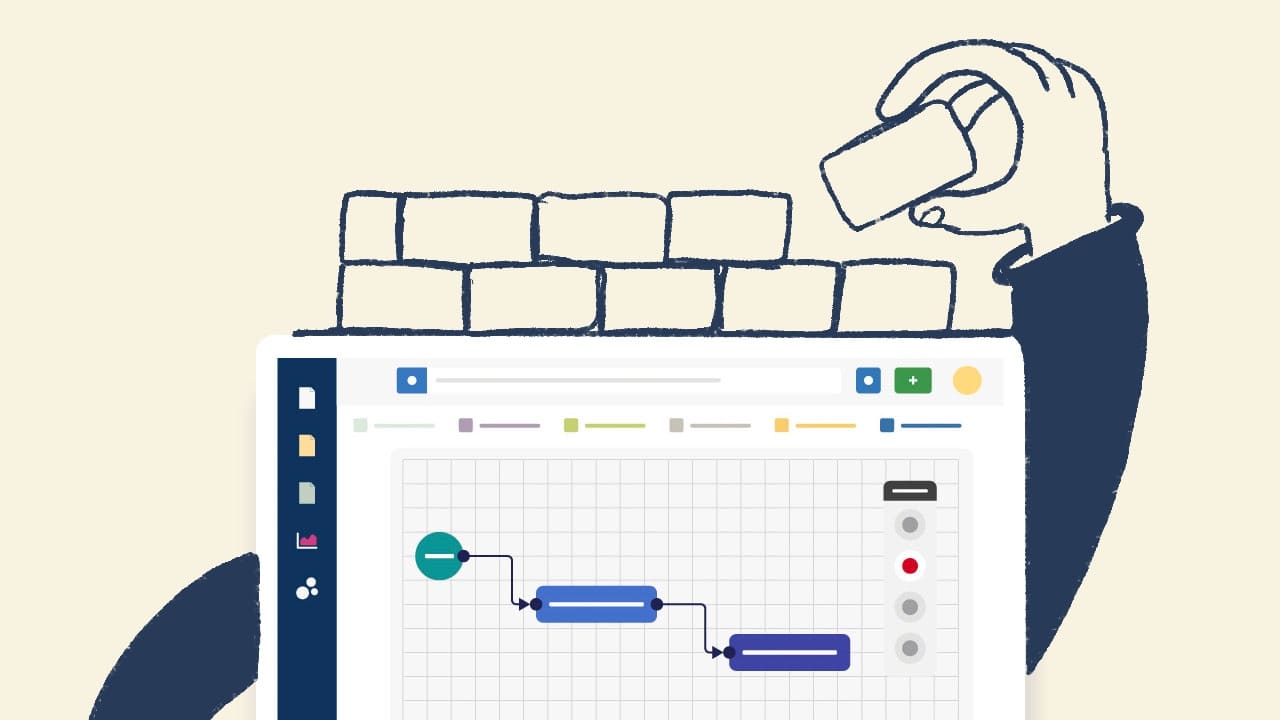Change is a constant in the corporate world, and navigating it can feel like a rollercoaster ride. Enter the Kübler Ross Change Curve, a powerful model that helps us understand the emotional journey employees undergo during significant transitions.The Change Curve highlights the importance of empathy, support, and effective communication to navigate through the stages of Denial, Anger, Bargaining, Depression, and Acceptance, ultimately aiming for successful Organizational Change Management.
Whether it’s implementing new software or reorganizing teams, this curve illustrates the natural responses to change, making it easier for leaders to support their teams through the process.
In this article, we’ll explore the ins and outs of the Kübler Ross Curve, its stages, and how to effectively apply it in the workplace. So, get ready to dive into the fascinating world of Change Management!

What is the Change Curve?
The Kübler Ross Change Curve or Change curve, also known as the Change Curve, was introduced by psychiatrist Elisabeth Kübler-Ross in 1969. This model was originally designed to explain the emotional stages of grief and has since been adapted to the realm of organizational change.
The model outlines how individuals typically respond to significant changes in their environment, making it a valuable tool for business leaders.
At its core, the Kübler Ross model consists of several stages that people go through when faced with change. Understanding these stages can help organizations and managers anticipate emotional responses and implement strategies to support employees effectively.

The 5 stages of the Kübler Ross Change Curve
 While the original model identifies five stages—denial, anger, bargaining, depression, and acceptance—many organizations have expanded this to include additional stages, such as exploration and commitment. Here’s a breakdown of the 5 Kübler Ross Change Curve stages:
While the original model identifies five stages—denial, anger, bargaining, depression, and acceptance—many organizations have expanded this to include additional stages, such as exploration and commitment. Here’s a breakdown of the 5 Kübler Ross Change Curve stages:
1. Shock and denial stage
The first stage, Shock and denial, often manifests as disbelief or confusion. Employees may struggle to accept the reality of the change, leading to a temporary state of paralysis. During this time, it’s essential for leaders to provide clear and transparent communication to help employees process the information and begin to move forward.
2. Anger stage
As employees progress to the Anger stage, feelings of frustration and resentment can surface. This emotional response may be directed at the organization, the change leaders or leadership, or even the change itself. Employees might express their discontent through complaints or resistance to new initiatives.
Leaders should acknowledge these feelings and create a safe environment for employees to voice their concerns. By validating their emotions, organizations can help employees transition more smoothly to the next stage.
3. Bargaining stage
In the Bargaining stage, individuals often seek to negotiate the terms of the change. They may attempt to find compromises or propose alternative solutions to alleviate their discomfort.
This stage can be a crucial turning point, as it indicates that employees are beginning to engage with the change rather than resisting it outright. Leaders can facilitate this process by encouraging open dialogue and actively involving employees in discussions about the change, making them feel valued and heard.
4. Depression stage
The Depression stage is characterized by feelings of sadness and hopelessness as employees grapple with the loss of the familiar. This emotional turmoil can lead to decreased motivation and productivity.
It’s vital for organizations to recognize this stage and offer emotional support, such as counseling services or wellness programs. By acknowledging the challenges employees face, leaders can help them navigate this difficult period and foster a sense of community and understanding.
5. Acceptance stage
As employees move into the Acceptance stage, they begin to acknowledge the change and its implications. When employees accept the new normal, it paves the way for exploration and experimentation with new processes or systems.
Leaders can support this transition by celebrating small wins and sharing success stories that highlight the positive aspects of the change. This reinforcement strategy can motivate employees to embrace the new reality and look for opportunities for growth.
6. Exploration stage (additional stage)
In the Exploration stage, employees actively seek to understand and adapt to the new environment. They may experiment with new workflows or collaborate with colleagues to find innovative solutions.
This stage is crucial for fostering a culture of adaptability and resilience within the organization. Leaders should provide training and resources to empower employees during this phase, encouraging them to take ownership of their roles in the company and transition process.
7. Commitment stage (additional stage)
Finally, the Commitment stage marks the point where employees fully embrace the change and integrate it into their daily routines. At this final stage, individuals have not only accepted the change but have also committed to making it a part of their professional identity.
Organizations can reinforce this commitment by recognizing and rewarding employees who demonstrate enthusiasm for the new systems or processes. This recognition not only boosts morale but also solidifies the whole change initiative as a permanent aspect of the organizational culture.
The Change Curve model applied for organizational change
Applying the Kübler Ross model in the workplace involves recognizing each stage and implementing specific actions to support employees. It is a really good path for effective change management. Here’s how to approach each stage:
-
Shock and denial: Provide clear and transparent communication about the change. Offer reassurance and support to help employees process the information. Employees might cling to past processes during this stage, resisting new methods and procedures.
-
Anger: acknowledge the emotions employees are experiencing. Create a safe space for them to express their feelings and provide channels for feedback.
-
Bargaining: Encourage open dialogue where employees can voice their concerns and propose solutions. This can help them feel more involved in the process.
-
Depression: Offer emotional support through counseling or wellness programs. Recognize the challenges employees are facing and validate their feelings.
-
Acceptance: Celebrate small wins and progress. Share success stories to inspire others and reinforce the benefits of the change.
-
Exploration: Provide training and resources to help employees navigate the new systems or processes. Encourage collaboration and experimentation.
-
Commitment: Reinforce the change by integrating it into the organizational culture. Recognize and reward employees who embrace the new way of working.
By proactively addressing each stage, organizations can enhance the success rate of their change initiatives and minimize the negative impact on employee morale.

Benefits of the Change Curve
Implementing the Change Curve in the workplace offers several advantages:
-
Enhanced understanding: The model provides a framework for understanding emotional responses, allowing leaders to anticipate challenges and plan accordingly. It is crucial to support personal transition during organizational change to ensure individuals receive the necessary guidance and support.
-
Improved communication: By recognizing the stages of the change process, leaders can tailor their communication strategies to address employee concerns effectively.
-
Increased success Rate: Organizations that apply the Change Curve model often see higher success rates in their change initiatives, as employees feel supported throughout the process.
-
Stronger culture: Emphasizing emotional well-being during transitions fosters a supportive workplace culture, leading to greater employee engagement and retention.
Challenges of the Change Curve in the workplace
Despite its benefits, applying the Change Curve can present challenges:
-
Individual variability: Employees may progress through the stages at different rates, making it difficult to address everyone’s needs simultaneously.
-
Resistance to change: Some employees may cling to the status quo, leading to resistance that can hinder the change process.
-
Limited awareness: Not all leaders may be familiar with the Kübler Ross model, which can result in inconsistent support for employees.
To overcome these challenges, organizations should invest in training and resources to equip leaders with the knowledge and tools necessary to effectively manage change.

Conclusion
Navigating change in the workplace can be a daunting task, but understanding the Kübler Ross Change Curve provides a roadmap for success. By recognizing the emotional stages employees experience, organizations can implement targeted strategies to provide support to their teams, ultimately leading to a smoother transition and a more resilient workplace culture.
Remember, change is not just about processes; it's about people.
So, the next time your organization faces a significant change, consider the Kübler Ross Curve as your trusty guide through the emotional landscape of transition!
Frequently Asked Questions
1) What is the Kübler Ross Change Curve?
The Change Curve is a model that outlines the emotional stages individuals go through when faced with significant change, including denial, anger, bargaining, depression, and acceptance.
2) How can organizations apply the Kübler Ross Change Curve model?
Organizations can apply the Change Curve model by recognizing each stage of the change process and implementing specific actions to support employees, such as clear communication, emotional support, and training.
3) What are the benefits of using the Kübler Ross Change Curve in the workplace?
Benefits include enhanced understanding of emotional responses, improved communication, increased success rates of change initiatives, and a stronger workplace culture.
4) What challenges might organizations face when applying the Kübler Ross Change Curve?
Challenges include individual variability in how employees progress through the stages, resistance to change, and limited awareness of the model among leaders.














.jpg?upsize=true&upscale=true&width=780&height=205&name=ITIL%20Foundation%20Exam%20(2).jpg)
